Eurail Passes are famous as a way to save money while exploring Europe, but they are also confusing and often misunderstood. They are still an amazing money-saving tool for certain types of travelers, and not a wise idea for most others. Before Europe introduced dynamic rail pricing (like airfares, where the price varies depending on when you buy it), a Eurail Pass was an easy way to save money since all tickets had fixed prices that were generally fairly expensive. These days most travelers can save far more money just by buying their train tickets at least a few weeks in advance.
That said, Eurail Passes are still great for longer trips and especially for people who like to make plans as they go. Dynamic rail pricing made advanced tickets much cheaper, but it also made last-minute tickets MUCH more expensive. Below we will discuss Eurail Passes and whether they are a good idea for your trip or not.
Disclosure: This is a reader-supported website and some of the links are affiliate links where a small commission is paid to help keep this site going.
Note: This article was written in 2012 and has been continuously updated since then, so all information is current as of April, 2024.
Eurail 2024 changes: New countries and a mobile version

Aside from that it’s just the normal fact that they have updated the timetables as of December 2023 and have a few promotions going on, but those usually don’t happen over the busy summer season.
Eurail passes are now available in a mobile version
Until very recently, Eurail Passes were only available in paper form and they were quite confusing at first. You’d get a pass with a series of empty boxes on it and you’d need to enter your trip before you’d use your pass each day and then have the first conductor verify it. If you lost your ticket (and this was not uncommon), it was a whole ordeal to attempt to get a replacement.
Again in 2024 Eurail offers a fully mobile version that is delivered instantly to your mobile device with no delivery fee. And if you somehow lose your phone, you can resume using your Pass on your replacement with no extra headache. This is MUCH more convenient in every way and as long as you can keep track of your phone you’ll always have your train pass handy.
If your trip will be 2 weeks or less, a Eurail Pass probably won't be worth it

Eurail Passes are ideal for travelers on longer trips, and especially those who don’t want to plan all of their destinations and dates far in advance. If you have your itinerary pretty much planned out and you don’t require much flexibility, you’ll be far better off just locking in your dates and buying your train tickets as early as you can. Again, they can be surprisingly cheap if you buy 2 to 4 months out.
If you are age 27 or younger, a Eurail Pass is probably worth it

With this in mind, if you are lucky enough to still be 27 or younger, you should seriously think about getting a Eurail Global Pass Youth, partly because the sense of freedom instantly gets more expensive at age 28. The age cutoff was 25 until recently, so this change is a great deal for anyone who will be 26 or 27 at the start of their trip.
You aren’t guaranteed to save money by buying a Youth Eurail Pass, but chances are good that you WILL save money and you’ll definitely save a lot of hassle as well. Especially now that Eurail Passes come in a mobile form, it’s even that much more convenient to just hop aboard any train that is about to leave the station and not worry about buying or even having a ticket. Especially for young people, it can be really fun and exhilarating to literally just walk into a train station with your backpack and look at the departure board and then decide where to go at that moment.
If you are age 60 or over, a Eurail Pass could also be great value
Another fairly recent change is that anyone who is 60 years or older at the start of the use of a Eurail Pass now gets 10% off the normal adult fare. That new discount is going to make this a great value for many travelers who might have been on the fence about buying a full-price pass before.
>>>Check prices on Eurail Passes
If you are planning on traveling in 1st Class anyway, a Eurail Pass is probably worth it
Most 2nd Class trains provide similar comfort and legroom to Business Class airline seats, or at least close enough, so for most people it’s not worth the added expense for 1st Class. However, if you are rich or elderly or fear contact with strangers, a 1st Class Eurail Pass is probably worth it no matter what.
Not only do you get much more comfort and legroom in 1st Class, with only 3 seats across instead of 4, but there is another advantage to 1st Class on European trains. Since it’s mostly business travelers and wealthy people traveling in 1st Class, the carriages are almost always mostly empty except in the mornings and late afternoons between large cities. In 2nd Class the only available seats might be two seats in an 8-seat cabin with all the other seats taken up by a loud family or a group of rowdy friends. In 1st Class you are all but guaranteed a peaceful ride, and usually plenty of empty seats from which to choose.
A hidden Eurail Pass benefit: Making extra stops on travel days for free

Brussels in particular is one I recommend a short stop in because the small historic center around what they called the Grand Place is amazing and gorgeous, while the rest of the city is rather boring by European standards. With a Eurail Pass you can jump off the train in Brussels and explore the city center for a few hours (luggage storage is cheap and easy) and maybe have lunch, and then hop on a later train to complete your journey to Amsterdam. There are opportunities like this on many if not most trips between larger cities, and if you buy the point-to-point tickets you have to stay on the train you booked.
Another example is the high-speed train between Barcelona and Madrid, which takes about 2.5 to 3 hours in each direction. There are some interesting cities in between, but in this case you could take a morning train from Barcelona to Madrid and then check into your accommodation, and then hop on another train from Madrid to Toledo, which takes about 30 minutes and costs €14 each way. Toledo is a historic and fascinating town, but it’s also pretty small and you can explore the main sights in an afternoon. With a Flexi Eurail Pass where you buy a certain number of travel days, you can save more money by adding on these sorts of nearby stops on travel days.
If you'll be touring major cities within ONE country, a single-country pass might be perfect, and Second Class passes are available for all ages
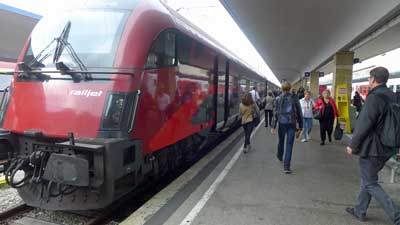
Single-country passes are still available and they MIGHT be good value for you, but it depends on which country and how much traveling you’ll be doing. If you plan on going all over a larger country such as Germany, France, or Spain, and especially if you like to make plans as you go, a Single-country pass for one of those might be your best deal. On the other hand, smaller countries (such as the Netherlands) or countries where train tickets are already fairly cheap (such as Italy) might be harder to get value out of. Long story short, for single-country passes you really need to check fares of the places you plan on going and see how they add up compared to the pass.
>>>Check prices for Single Country Passes
Eurostar (between London and Paris or Brussels or Amsterdam) tickets are now included for Eurail Pass holders for a €30 reservation fee
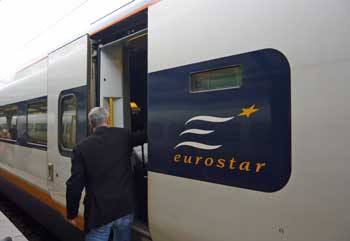
Our recent tests show that Eurostar fares one-way from London to Paris can be as low as €49 if you book about 3 months out, or as expensive as €214 for the same seat if you wait until the day of travel to buy. Round-trip/return tickets can be even cheaper if there is a promotion running.
>>>Check Eurostar prices
If you are on a really low budget, a Eurail Pass isn't a good idea
Here’s the thing. As we’ll discuss below, there are many potential benefits to Eurail Passes, and they will often save you money, but they do cost a lot and they only really save you money when traveling in the more expensive countries.
So let’s say you have a flight to Rome and then US$2,000 to last you a month after you arrive. Buying a Eurail Pass before you go would help you see a lot in that month, but you’d practically need to sleep in parks for your funds to last the whole time. You’d be better off moving slowly in the southern countries, or just in Italy itself, as a way to have the best holiday on your budget. You might also be tempted to use a Eurail Pass mostly on night trains so you can save the cost of a hotel or hostel, but those aren’t ideal for most of us.
The cheapest way to get around Europe by rail is to buy all train tickets online at least a couple months in advance. The fares are low, but they are non-refundable and non-changeable. See how far in advance you should buy train tickets to get those attractive fares.
If more than a little of your travel will be in eastern Europe, a Eurail Pass isn't a good idea
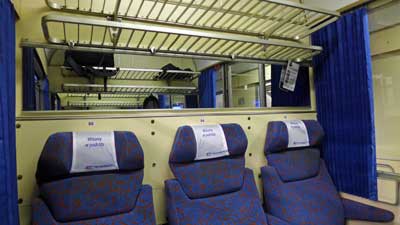
The good news is that the trains operating in this region, and the buses that operate alongside and/or where trains aren’t running, are quite cheap. So if any significant part of your trip will be into this region, a rail pass doesn’t make sense.
Basic types of Eurail Passes
Long gone are the days of the simple options, replaced by specialized passes that are meant to appeal to different styles. It should be pretty easy to figure out which is best for you, and then keep going down the page to decide if it’s worth it at all.
Eurail Global Pass – 4,5, or 7 days within 1 month or 10 days within 2 months
Until recently the minimum number of travel days with 10 days within 2 months, but now you can buy as few as 4 days within 1 month for about €200 to €250 (for first class). This can actually be an interesting strategy if you are planning many shorter and cheaper trips (like within Italy or Eastern Europe), and also 4 or 5 longer trips such as Berlin to Amsterdam. This way you can buy only 4 or 5 travel days and only use them for your most expensive travel days, and just pay as you go or buy cheap advance tickets for your other journeys.
Eurail Global Pass – 15 to 90 consecutive days
This variation allows for unlimited travel on the system for between 15 and 90 total days. They are really only a good idea for people who are certain they are going to travel very often, with much of it being in the north of Europe. The problem with them is that if you really try to get your money’s worth, you will probably ruin your trip by spending too much time on trains in general. On the other hand, if you will be in Europe for 2 or 3 months and plan on traveling around a lot, you can get a LOT of use out of a longer pass. The 3-month pass is around €900 so it’s literally about €10 per day. Imagine going back and forth between Berlin and Munich or Barcelona and Madrid for €10 per day!
One Country Pass
Obviously these are for travel within one country only. Again, they can be great deals if you plan on extensively moving around one particular country.
Where to buy your Eurail Pass
Eurail Passes are cheapest and easiest to buy online, primarily from two main sources which offer all the same products at the exact same prices:
This is a reliable company based in the Netherlands but with fulfillment offices in the US and Ireland. Price of Travel is a partner with this company, and if you use the links of this site we earn a small commission to help keep this site online. Eurail.com is usually cheaper than RailEurope (discussed below) by the way.
They were founded in the 1930s and are based in New York, but owned primarily by the French and Swiss rail companies. They offer free shipping (2 to 3 business days) on all orders of US$399 or more, although now that a mobile version is available, this is meaningless. Price of Travel is a partner with this company, and if you use the links of this site we earn a small commission to help keep this site online.
Reservations on European trains for rail pass holders
For most of the fastest trains between major cities you’ll need to reserve a seat even with a rail pass. It can usually be done just before you leave and the cost is usually around €5. Here’s a full list of which European trains require reservations and which don’t.
Reservations are required on all intercity (longer distance) trains in or involving France, Spain, Switzerland, and Italy. For most trains in Germany, Austria, Netherlands, Belgium, and most of eastern Europe, you can usually find trains that don’t require seat reservations. Often, if you don’t leave until after 9:30am or so, you can ride on any train with no seat reservation, but you have to research each leg to be sure.
How to determine which trains require seat reservations, and also get schedules
You can click on the link just above this section for a list of countries and their seat-reservation policies, but in some cases it’s actually a bit more complicated than that. For example, you can generally ride without a seat reservation on fast ICE (Inter City Express) trains in Germany if you depart after 09:30 in the morning. They do this to free up seats for business travelers who pay full fare, and they don’t mind filling up seats with rail pass holders on trains leaving a bit later.
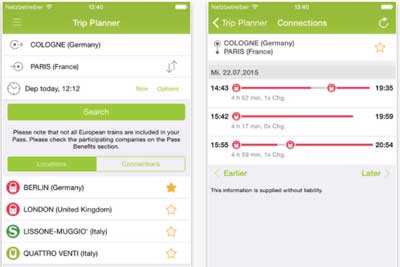
Night trains in Europe are making a comeback
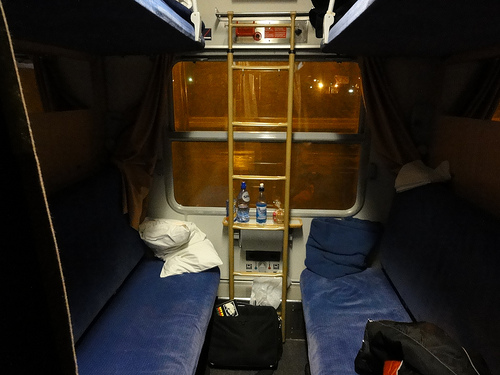
Fast forward to 2024 and night trains are not only expanding service, but they are very trendy. Some of it is nostalgia for the older way of getting around, but most of it is for environmental purposes combined with European hatred for the “low cost airline” experience with RyanAir and Easy Jet etc.
Personally I’m still not a fan of night trains because I find it difficult to sleep on them since they often get decoupled at interim stations in the middle of the night and then coupled onto other trains coming from other places, and I can’t sleep through any of that. But still, they are worth looking into and they are fun to try at least once.
A bit of warning that they tend not to be cheap and even if you have a Eurail Pass you’ll almost certainly want to book a sleeping cabin with a bunk or couchette, and that will come at an extra fee. On the other hand, if you are the sort of person who can sleep sitting upright in a normal seat, then that won’t cost any extra on most overnight trains.
Factors to consider when thinking about any Eurail Pass
Assuming you know which Eurail Saver Pass option is the best one for your type of trip by now, we’ll go over the main factors that should help you decide whether it’s the best idea for you.
Eurail Passes are best for standard ‘medium length’ journeys

However, if you are determined to travel between Rome and Paris, it’s about a 14-hour journey that will almost certainly be overnight. In this case, a cheap plane ticket is probably better, although taking shorter hops on the train is even better, so spend a day or two in Milan or Lyon on the way instead.
And of course, if you prefer to stop in various small towns between the big ones, then a Eurail Pass won’t pay off, except for the traditional kind for unlimited travel in a given period.
Eurail Passes are better value in northern Europe, France, and Spain, and poor value in Italy
Once you do a bit of research you’ll quickly learn that train tickets (and almost everything else) are much more expensive in Germany, Netherlands, Denmark, Sweden, Norway, and Finland than they are in Greece, Italy, Portugal, and Spain. With this in mind, the regional passes can make sense if you are spending time in the south, but the Global Passes almost certainly won’t. Train tickets in Spain used to be fairly cheap, but in recent years they’ve added new high-speed trains between the major cities, and these are quite expensive.
Unlike most other countries, Italy really subsidizes its train tickets so they are quite reasonable even on travel day, and very cheap if you buy a month or more in advance. For example, you can go between Rome and Florence for around €49 if you buy on travel day, and as little as €19 if you buy well in advance. In most other countries, fares are double or triple that much for similar rides.
So consider your planned itinerary. If more than half of it is in the Mediterranean countries then look into a Regional Pass or just buy tickets as you go, because they tend to be pretty cheap. But if you are planning on spending at least half your time in Paris and places to the north of it, then a Eurail Pass is probably a money saver because those tickets are expensive.
Trains are almost always better than planes
Flying sucks, even in Europe
Until you’ve experienced the joy of traveling around Europe by train you might be tempted to “maximize” your time by flying low-cost airlines between each city. This would be a mistake. In order to get truly cheap airfares you have to purchase long in advance, buying non-refundable tickets. You might also have to commit to flights in the very early morning or in the late evening, because cheap tickets on convenient flights sell out quickly.
And again, most European airports are around an hour outside of the city. They are often on the main train lines, which helps, but still you have to deal with the madness of security and also try to get there at least two hours early. From one city center to any other city center it’s about 5 hours minimum, even if they are close, and those are pretty miserable hours.
Train travel is a positive experience

Not only are all the seats comfortable on trains, but you also have an interesting view most of the time. Better still, trains deposit you in the heart of every city, which is usually the neighborhood with the cheapest hotels and food. It’s a wonderful feeling to step off a relaxing train ride, buy a hot dog or sandwich at a local shop, and then be in your hotel room only about 10 minutes later.
Eurail Passes are better than train tickets alone
As someone who enjoys the process of crunching numbers and looking for value, I have to also mention that I’d buy a Eurail Pass even if it seemed like it would cost a bit more than the individual tickets. With a pass you get an extra element of freedom that is worth a lot more than you might expect until you’ve used one.

Let’s say you are heading from Amsterdam to Hamburg tomorrow morning. The 09:00 train you planned for might seem a bit ambitious after a long night out, so you can instead opt for the 10:00 or 11:00 train. As long as you walk into Centraal Station 10 or so minutes before departure, you are on. If you are flying you can’t change your ticket, and if you are buying train tickets as you go you have to be in line at the international desk at the train station at least 30 minutes early, and even then you might miss it if they are busy.
Freedom and getting to feel like a big shot
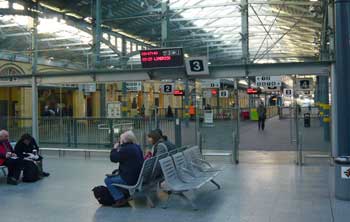
Let’s say you are staying at a hostel in Brussels, and two groups of new friends suggest that you go along with them to their next stops. One group is going to Bruges, which is a short and cheap journey, so you can join them by buying individual tickets (unless you have the unlimited pass, making it free). Then you restart your trip from Bruges, on to your next destination. The other group is headed to Berlin on a night train, which is long and expensive, but with a Eurail Pass you don’t even have to think about the cost. On you go, just like a rich person.
Buying a Eurail Pass is great for those who might run out of money
We all know people who keep meticulous track of every penny they spend, and who are always putting money away for a rainy day. And we all know people who can take a US$100 “entertainment fund” and burn through almost all of it in just a few hours. For the first type of person, a Eurail Pass can help you keep track of expenses, but it’s really the second type of person these are best for.
It’s sad to hear about people who have big plans to see their dream destinations, but they run out of money for transportation halfway into the trip, so they have to just stay put until they fly home. It happens. Locking in your major transportation costs before you leave home, and probably saving money in the process, is a wise move for anyone who isn’t as disciplined as they’d like with their money.
>>>Check prices on Eurail Passes
Bottom line: If you want to keep travel costs down, your choices will usually be a Eurail Pass or buying tickets at least a month or more early
In the last few years, almost every long-distance train ride in Europe has switched to a pricing system similar to low-cost airlines. In other words, tickets go on sale 2 to 6 months ahead of time at very low prices, and they keep getting more expensive as the train fills up and the date approaches. For most trips where a rail pass is possible, this is how things stack up:
Cheapest possible way: Buy advanced (non-refundable, non-changeable) train tickets at least 30 days in advance
Next cheapest way: Buy a Eurail Pass and make seat reservations as you go, usually only a day or less in advance.
Most expensive way: Buy train tickets as you go, or less than a week in advance.
Thinking about it this way should make the choice a bit easier. If you are the type who likes to plan each day and travel segment long before you even leave home, then buy tickets online for the best prices. This can be the best strategy for most shorter trips (10 days or less) because you simply don’t have enough time to change many things as you go anyway.
Buying a Eurail Pass won’t be quite as cheap, but you are buying a LOT of flexibility with the extra money. If you dream of making up your plans as you go, or even making up your plans just a few days in advance, this is almost always your best bet.
But if you wait too long, and just show up looking to buy train tickets as you go, they are going to cost a fortune. As recently as only a few years ago all seats would be the same price on many rail systems, so you could always just wing it. When each country computerized its rail systems so they can sell advanced tickets cheaper, they also had to keep track of seat reservations, so the whole pricing structure had changed to favor advanced ticket buyers and rail pass holders over those who’d prefer to just hop on any train as it is leaving the station.
Have a rail pass or itinerary question of your own?
It wasn’t planned but scores of people began asking me rail pass and itinerary questions at the bottom of this article and a few others. I’m happy to keep answering them and now I’m trying to organize them better as well so they are easier for other people to find.
If you have a question about specific types of European rail passes, please ask it in the comments below.
But if you have a question more about a European itinerary or other non-rail-pass questions, please click over to the European itineraries Q & A article and ask in the comments of that one.

Hi Roger
I am currently in Croatia and in about a week planning to visit the neighbouring countries namely Montenegro, Bosnia & Herzegovina, Serbia, Bulgaria and Romania (maybe Kosovo). I only have about three weeks and I am happy to drop a few countries from my list if it gets too rushed. Can you please recommend the places that I should visit in these countries and how much time should I dedicate to these towns? The places currently on my list include: Kotor (2 days), Mostar (2 days), Sarajevo (2 days), Belgrade (3 days), Sofia (2 days), Poldiv (2 days), Bucharest (4 days). Also please share your views on Kosovo.
Regards
Neo
Hi Roger, its been a couple of months since our last message. I have another question. I am trying to crunch the numbers of transportation cost and seeing if you know any particular euro train, bus, or flight website that you trust to give you prices. Sort of like a kayak.com thing.
Also, I was wondering if you could recommend me any German cities to visit. I should be in Germany by mid or early september. I want to visit three German cities and Berlin is one of them. I am a huge WWII buff and would like to know what cities you would recommend?
Thanks, can’t wait to hear back from you.
Hi Roger,
You are absolutely God sent! I admire your patience and efforts in answering each query in detail. I did not want to put more work for you so I flicked past all the queries on this article but none fits my situation exactly, so I am writing in. Great information on the passes, they truly are very confusing.
Here’s my itinerary (since I am fixed with dates due to Oktoberfest and a conference, it’s a bit strange as I keep flitting between the two countries-Germany and Italy)
Munich – 4 days (possible day trips to Nuremberg/ Regensberg/ Salzburg/ Neuschwanstein castle)
Florence-4 days (Chianti, Pisa etc)
Berlin-4 days (possible day trips to Potsdam, Dresden, Leipzig)
Stuttgart – 1 or 2 days
Frankfurt-1 day (for book fair)
Cologne – 2 days
I have read your comments time and again that tickets for Italy trains are cheaper when bought individually so I might skip on that. However, I am not sure about Germany pass. I will be traveling via bus/train during the entire journey. What do you suggest? Should I buy the German rail pass for few legs of my journey? I only have a month before my visit so can’t get cheap tickets online now.
Thank you so much for all you do!
-Pragya
Pragya,
It’s always nice to hear that people find this helpful. The Savings Fares are actually available for German trains up until they sell enough seats. I just checked Berlin to Stuttgart for 3 weeks from now and fares of €67 are still offered. But tickets for Fridays and Sundays and Mondays can sell out much sooner, so if your schedule is fixed it’s possible that there are no cheaper tickets left. And €67 isn’t all that cheap anyway, although it’ll probably be your most expensive ticket.
I’d recommend going to bahn.com and checking the fares for your travel dates just to see how much they add up to. If they are more than a German Rail Pass then it’s obviously a good idea. The one-country Germany passes are pretty good value for someone going longer distances and who wants flexibility. Still, if you can book soon it might be even cheaper. If you want to go Munich to Florence then I’d fly there (Pisa Airport is an hour from Florence and has cheaper fares) and then fly from there to Berlin. A train ride would take like 12 hours each way and probably be much more expensive.
Since you are going to Oktoberfest then the trains are probably booked up going in and out of Munich, but if you fly you should be able to get a decent deal. You could even fly into Rome and it’s only about 2 hours to Florence from there. Let me know if you have more questions and I’m happy to help. -Roger
Hey Roger,
Glad to see so many people getting help from your advice and experience 🙂
I am planning to travel to 6 countries – Netherlands, Germany, Belgium, Czech Republic, Austria and Hungary over a period of 1 month. My maximum stay is in Germany for 12-13 days. Which train pass would you recommend? Is 1 month continuous global pass recommended if my itinerary is not to fixed. I wanted to know that is local train travel within the city covered in this pass or only city to city & country to country trains are covered? I believe S-bahn trains in Germany is covered in this pass? So is this pass worth it? I am 25 years so can get a youth discount also.
Shah,
It really depends on how many stops you plan on making during the month. Train tickets into and within Czechia and Hungary are fairly cheap, but those other countries are expensive so if you want to take quite a few longer rides in those countries on short notice, a rail pass could pay off. You are correct in that the S-Bahn trains in Germany are covered with rail passes on days that they are valid, but U-Bahns are not. In the larger cities you can get around pretty easily on the S-Bahn, so that should work. Also, in any of these cities you can get an unlimited local transit pass for around €7 per day, so it shouldn’t make much of a difference.
Really, the main factor is if you want to make plans as you go. If so then the rail pass is awesome, and you won’t need even a seat reservation in those countries as long as you leave after 9:30am or so, or you can get one for around €5 if you want to leave earlier. The price on the Eurail Global Youth Pass is pretty easy to get value out of as long as you are planning on going at least 2 or 3 hours on a train every 2 or 3 days, but you really have to move around quite a bit in order for it to pay for itself.
An option that I’d probably prefer would be to get a 4-country Select Pass that includes Germany, Benelux (Belgium and Netherlands count as one), Austria, and Czech Republic. You could get a pass with 10 travel days in 2 months for US$500. That should cover all of your longer rides except for in and out of Hungary, which you can pay cash for. Or you could get 8 travel days in 2 months for US$438. Including the Hungary rides that gives you 10 total journeys in the month, and that is about the most I’d recommend for the best trip. If you are going on a shorter ride or two such as Berlin to Dresden, you could pay cash for that also and still save quite a bit compared to the Global Pass for 30 days. Let me know if you have any other questions. -Roger
Thanks for that clarification! I’ve been dreading to make a commitment to the wrong avenue, as it’s just a wee bit confusing with all the like names of passes and such, for those of us who don’t do this a lot. I even saw somewhere that Rick Steve’s was wondering on the legitimacy of one of the website train passes and was soliciting advice from the blogosphere. So I guess it’s a treacherous out there, especially when they want your dough up front. Best regards!
David
Hey Roger,
Very informative website!
My wife and I are travelling as 60+ers, probably first class, from (1) Paris to Nice, (2) Nice to Barcelona, (3) Barcelona to Madrid, (4) Madrid to Bilbao, (5) Bilbao to Barcelona, (6) Barcelona back to Paris, over the course of three weeks.
What’s the best pass for us,a two-country Eurorail, or what? And make all the reservations ASAP? (We’re travelling in November)
Thanks again for all your help!
Regards
David
David,
I’m glad you find this information helpful. The problem with rail passes in France is that popular routes, including the ones you are planning, require a seat reservation fee that can be around €35 each. Actually, I just checked Paris to Nice and the seat reservation fee is only €10 for November, but if you buy a First Class ticket right now for November it’s only €45, so the Pass only saves you €35 if you were to buy soon.
The same is true on all of your other rides. If you book at least two months in advance you can get a Supersaver type ticket that should cost quite a bit less than the cost of a travel day on one of the rail passes. In other words, my advice is to buy all of your tickets as far in advance as you can, and the total should be much less than a rail pass. Really, rail passes are mostly good value for people on longer trips who want to make plans as they go. The walk-up fare for Paris to Nice is as high as €191, so a pass can be huge savings for someone who wants to go on very little notice. Check the official France rail site and the official Spain rail site and you should find surprisingly cheap tickets this far in advance. Let me know if you have any other questions. -Roger
Hi Roger,
Thanks for the great website…it has some of the best information I’ve found on the web. As much research as I’ve done, I’m still struggling to decide if we should buy individual train tickets or a Eurail pass. Our route through Europe is anticipated to be this:
Croatia — (Zagreb) Oct 1st – Oct 7th –7 days
Hungary — (Budapest) Oct 8th – Oct 11th –4 days
Austria — (Vienna) Oct. 12th – Oct 14th –3 days
Czechia — (Prague) Oct 15th – Oct 19th –5 days
Poland — (Warsaw) Oct 20th – Oct 22nd –3 days
Germany — (Berlin) Oct 23rd – Oct 25th –3 days
The Netherlands – (Amsterdam) Oct 26th – Oct 29th –4 days
Belgium — (Brussels) Oct 30th – Nov 3rd –4 days
France — (Paris) Nov 4th – Nov 8th –5 days
England– (London) Nov 9th – Nov13th –5 days
My fiancé and I are in our 30’s so we wouldn’t apply for any particular discounts. We are anticipating perhaps a few side trips in the Czech Republic and perhaps in France and The Netherlands as time allows. I’d be grateful to know your thoughts. Thanks so much in advance!
Logan,
I appreciate the kind words. In your case I wouldn’t recommend a Eurail Pass, mostly because the majority of your train trips will be in areas where the normal fares are fairly cheap to begin with. Looking at your list, I think Berlin to Amsterdam is the only one that would be pricey on its own, and if you buy that one at least a month or so in advance it will still be reasonable. In fact, since it seems that you have a mostly fixed itinerary already, I’d recommend buying all of these tickets fairly soon for the lowest fares.
Also, you should look into buses for all of the legs until you reach Warsaw. In that part of Europe the trains are only about as fast as buses, and buses tend to be cheaper with more frequent departures and often free wifi as well. Trains tend to be a bit more comfortable, but often there are only 2 or 3 departures per day compared to 10 bus departures and the bus is half the price.
And of course that leg from Paris to London will be on the Eurostar, which isn’t part of the Eurail system anyway. For the most part, Eurail Passes are best for people on long trips who want to make plans as they go and not have to pay full price for tickets. If you have your plans made like this, the individual tickets bought well in advance will pretty much always be cheaper. Let me know if you have any other questions. -Roger
Thank you so much for the advice! It is VERY MUCH appreciated!
Hi Roger,
Me and a friend are planning our trip to Europe. So far all we have is a plane ticket to London and are trying to figure out if the Eurail would be the best way to get around. We plan on going from London to Paris; Paris to Italy; and Italy to Spain. Would the global pass get us to all of these places? We are college students and trying to save the most money, it seemed like a good deal that the global pass could get us everywhere for only $363 but I’m not sure if I am looking at it correctly.
Caitlin,
Based on what you’ve said so far, I don’t think a Eurail Pass would be good value for you. First off, London to Paris is done on the Eurostar train, which is not part of the Eurail system. And unfortunately, tickets on the high-speed trains in France require a fairly hefty seat reservation fee for pass holders. If you are going straight to Italy from Paris it will actually be cheaper (and obviously far faster) to fly. Within Italy the train tickets are fairly cheap to begin with, so it’s hard to get good value out of a Global Pass. Then from Italy to Spain you are better off flying because it actually takes a whole day to get across southern France on the trains because they aren’t high-speed lines yet. Within Spain the high-speed trains between big cities are expensive at the last minute, but most other train fares are reasonable.
In other words, it will actually be quite a bit cheaper to buy your train tickets a month or more in advance, because a Eurail Pass doesn’t exactly cover all of where you are going well. On the other hand, if this trip will take over a month, it could change things a bit. Really the main value of a Eurail Pass is being able to make plans as you go and lock in a fixed price that is reasonable. If you will be doing many more legs than it seems based on what you’ve written, it’s possible that a Youth Flexi Pass could help. If you could buy, say, 8 travel days in 2 months at that price, you could at least use those for all of your more expensive legs that are covered by the pass. You would save money going between Spain’s big cities that way, and you might save some money in France if you want to go to many places that are far apart and have reasonable seat reservation charges. It’s complicated, unfortunately. Let me know if you have any other questions. -Roger
Roger,
Thanks in advance for being so willing to help us bewildered travelers! I’m planning my first trip to Europe in 20 years. I went twice in my 20s when Eurail was easier and less expensive; now I want to bring my kids on a family trip. I thought it would be fairly easy to travel by train between cities and save some money and hassle, but after reading your site (and a few others) I see that it’s not as straightforward as I thought. I’ll tell you what I’m thinking, and assistance you can provide will be much appreciated!
There will be 4 of us: Ages 61, 44, 9, and 4. We will be starting the trip with my parents and sister’s family on a Disney Cruise that ends in Rome on June 23, 2018. After spending a few days in Rome, the others will return to the US while my immediate family will continue to tour Europe for another 7-10 days. This is where the rail travel comes in. My plan is to go from:
Rome to Venice – spending 2 nights? there, then
Venice to Innsbruck – 1 night, then
Innsbruck to Bern or Zurich (or your best recommendation!) – 1 night, then
Switzerland to Paris – 2 nights?, then
Paris to Amsterdam – 2 nights?
(It’s possible we may want to stop for a night in Brussels or other Belgian city on the way up to Amsterdam.)
I love the idea of the flexibility of a pass, but loathe the idea of overspending. However, if it would only cost a little more in your opinion, then I would probably spring for the pass just for the convenience. The other thing I’m not fully understanding is the cost for my kids. Is my 4 year old free? What about my 9 y.o.? Are there senior rates for my 61-year-old husband?
Thank you so much for your time and consideration!
-Elisa
Elisa,
I know what you mean about the difference between Eurail in the last 20 years. It used to be an easy decision to get a pass if you were going to at least 5 or 6 places, but it’s all very complicated now. One very good major change is that advanced train tickets are now much cheaper than they used to be (when they used to be a fixed price). If you were going for at least a month the freedom of a rail pass would be worth a lot more because you might change your plans quite a bit from the first draft. But for only 7 to 10 days a pass would cost a lot more than advanced tickets and I don’t think it’s worth it.
So really the good news is that as long as you plan out your itinerary in advance you can buy tickets shortly after they go on sale (usually 3 to 4 months out) and get low fares on the best departure times. That’s the way to go for sure.
My recommendation for Venice is to visit for about 24 hours, although 2 days should be fun. It’s so crowded from about 9am until 6pm that it’s not as fun as it should be, so the key is to book a hotel on the main island and do some sightseeing in the morning and the evening, when crowds are much smaller.
Innsbruck is a famous ski town, but honestly there isn’t much else to see or do there. Salzburg is a FAR better choice, but it’s also 2 hours out of your way so it won’t work. I’d go from Venice to Interlaken, which takes a bit under 6 hours and is one of the most beautiful train rides in the world. You can read about the highlights of Interlaken in my main article about where to go in Switzerland. I’d spend 2 nights there and skip Bern or Zurich. If you also want to visit a Swiss city then Bern is the best choice.
If you can spend 3 nights in Paris it would be better than 2 nights. And after that I’d go directly to Amsterdam for 2 or 3 nights. The train from Paris to Amsterdam takes just a bit over 3 hours, and really Amsterdam is far more interesting than Brussels or Bruges or any other Belgian city. If you had more time those would be great as well, but it sounds like you’ll already be in a bit of a rush.
Generally speaking, to get a senior fare on Europe trains you have to buy an annual senior card for that country. Some start at 60 and others at 65. A couple of the rail passes have senior prices on 1st Class passes, but in your case you’ll probably be paying full price for your husband.
The child tickets are also different for each country. Usually kids under 6 are free, and until they are 12 they get discounted fares that are around half of an adult fare. You can check the rules on the different websites for each country. I have links to all of them on my post about buying train tickets in advance, along with other information that you may find helpful. Best of luck with this and let me know if you have any other questions. -Roger